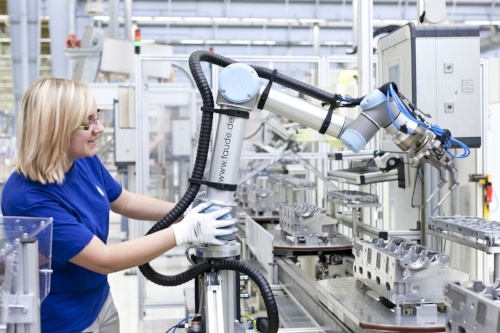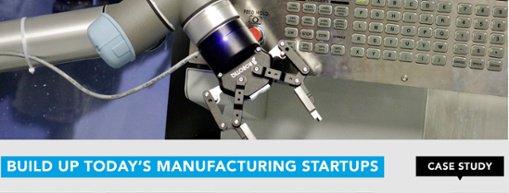Shopping for a Robot: Tips to Find Your Perfect Match

You are ready to buy a collaborative robot? You recently received your management’s approval to start your automation project? Or you’re just looking at what the market has to offer? Regardless of the reason why you are looking at collaborative robots, we have all the tools to help you get from a window shopper to a smart robot buyer.
 We’ve dedicated a whole eBook to the many aspects of buying a robot: Shopping for your Collaborative Robot. As part of the Getting started with Collaborative Robots series of eBooks, this chapter covers everything there is to know about this crucial step of your automation process.
We’ve dedicated a whole eBook to the many aspects of buying a robot: Shopping for your Collaborative Robot. As part of the Getting started with Collaborative Robots series of eBooks, this chapter covers everything there is to know about this crucial step of your automation process.
Here’s a quick view of what you’ll find in the eBook.
Before Shopping
There are a lot of robot models out there, but you don’t want to end up with an ill-fitting robot. It is useful to identify your specific needs early in the process. With fixed requirements matching your production needs, your final purchasing decision will be a lot easier to make.
To identify your needs, select a project manager in your team. This should be someone who believes in the project, knows the production processes pretty well and who will be able to build a team around the robot(s).
Communication with employees will also be very important. They’ll have many questions, especially in terms of safety and jobs losses. Be prepared to inform your team about those concerns and to explain how the robot is safe and that it is more of a job creator than a cutter. For example, take a look at the Lowercase NYC case study to see how adding a robot to your team will accelerate the creation of well-paid jobs.
We’re Going Shopping!
Top 5 Specs for Cobots
It's important to keep in mind that you are not searching for the best robot ever; you are searching for the best fit for your application. This eBook highlights 5 majors specs of a cobot to consider before buying:
1- Payload: How much weight can your cobot safely handle?
2- Reach: What is the maximum distance your cobot can travel? Is the cobot able to work in your given space?
3- Repeatability: In a cobot application, you want a robot that will repeat its motions within a certain limited area.
4- Ease of programming: If you don’t have a robotics background and you can’t afford to spend weeks training and learning, is your cobot sold with an easy-to-use programmable software?
5- Safety: Do you have all the infos from the manufacturer regarding what forces the robot can apply?
You are more of a visual person? No problem, we’ve put all of these important decision criteria into a cheatsheet that will guide you towards your perfect collaborative robot.
Regarding the Shopping for a Collaborative Robot eBook, you’ll also discover other important specs to consider in your purchase, like its weight, speed, acceleration and lifecycle.

Get a Hand
Choosing the right end-effector is as important as the choice of robot itself. This is your robot’s hand. You’ll want something as versatile as possible. We’ll guide you through the options and help you choose the right Gripper for you.
Just like the robot, there are many variables to consider before purchasing. This eBook allows you to evaluate the right payload, force, stroke, weight, energy source and flexibility that a Gripper needs to fit in your factory.
Above all, you’ll want something that is user-friendly and cost-effective.
Feel it
Does your robot need to see or touch objects? There are many sensors that can make it a lot more autonomous.
For example, having a vision system can be really useful in some applications. It can help to pick and place objects of different sizes and positions, which is ideal for high-mix manufacturing.
If your robot is required to do some delicate handling, adding force torque sensors to your robot will make it more sensitive and capable. If your application needs precise force detection, a force torque sensor could be critical for a successful implementation.
The Right Partner
Once you have a good idea of which collaborative robots could perform well into your factory, you can contact the distributor of each selected model to close the deal.
If many robots can do the job on your production floor, you’ll probably want to choose the one that is sold by a partner who offers great service right from the start, an integration process that fits your needs and most importantly, a great after-sales support.
For all the details on how to choose the right cobot, Gripper, tools and partner, download the free eBook Getting Started With Collaborative Robots, Part 2: Shopping for a Robot.







Leave a comment